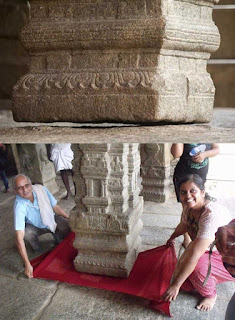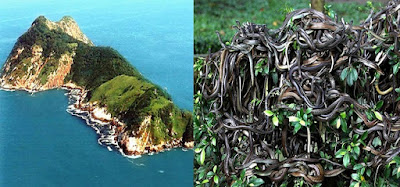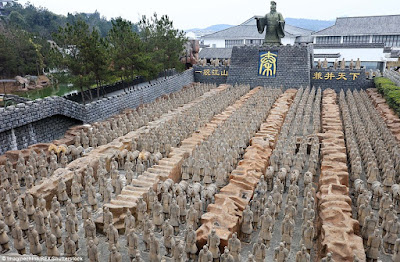Hanging pillar (Pillar without gravity)
The Veerabhadra Swamy Temple is calm,
serene and has preserved its sanctity. The outer portion has a massive Dance
Hall with numerous pillars supporting the roof. One corner pillar is the famous
‘hanging pillar’ that does not touch the temple floor at all. Puzzled by this,
a British engineer Hamilton tried to rectify this architectural aberration in
1910.
Though, he managed to make
one corner of the pillar to touch the ground. It led to a tectonic shift in the
roof of this outer hall, with distortion in roof alignment and pillars now
leaning on and the roof paintings distorted. The engineer realized that any
further attempt could instead ruin this entire edifice. Further research
revealed that the pillar acted as a ballast to the hall’s roof. Hence, a minor
change could ruin this balance and cause irreparable damage to the structure.
In this Hall, statues of
musicians and dancers striking poses are kept. A Gopalakrishna mural on
the roof appears to be three dimensional and appears to look at you from
any direction. Inside the temple complex there is a sculpture of a huge seven
headed serpent carved from a single stone and positioned to protect the
Shiva linga. Outside the temple premise, there are lot of pillars with carvings
and paintings on the walls. One can also see one large foot print on one
hillock and lot plates like carving throughout the surrounding.
Mythological Significance
Lepakshi’s origin has two
interesting myths associated to it. But, both the tales are
impregnated with grief and pain.
Le-Pakshi
This story originates from the
epic Ramayana. It’s said that Jatayu had
a furious battle with Ravana when
he tried to rescue Sita from Ravana’s abduction attempt.
But, he couldn’t withstand
Ravana’s power and fell off to Earth after losing his wings. It is believed
that Jatayu’s wings fell on the rocks here. When Lord Rama commanded the bird
to rise (Le-Pakshi), the place got its name. Moreover, we can see footprints of
Lord Rama at one of the rocks in Lepakshi.
Lape-Akshi
Another prominent legend is that
Veerupanna and Veerana were two brothers who worked for the Vijayanagar King. Veerupanna’s
son was blind since birth and it is believed that he got back his eyesight
while playing around the Shivalinga in the temple premise. This story reached
the king that Virupanna was using the royal treasury to cure his son. The king
gave orders to take away Virupann’s eyesight and blind him.
Hearing this, Virupanna
himself took off his eyes and threw them against the walls of the under
constructed Kalyana Mantapa inside the temple premise. Thus, the place got its
name as Lape-Akshi (village of the blinded eye). Even till date we can see
blood stains on that wall and those stain marks has been confirmed as real
blood stain marks by British scientist.





Comments
Post a Comment
Your suggestions